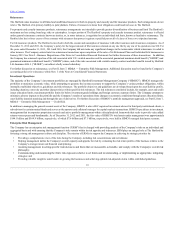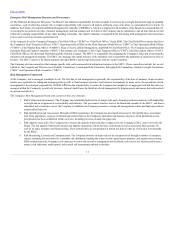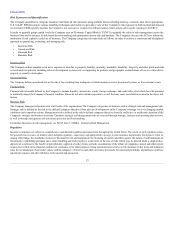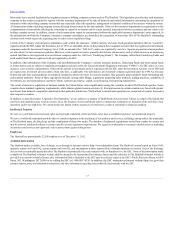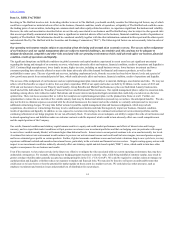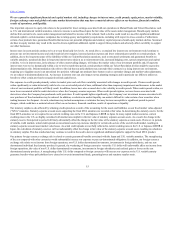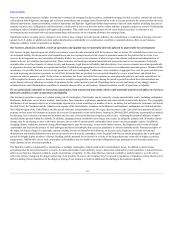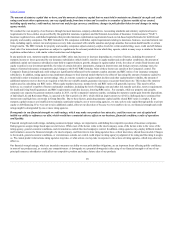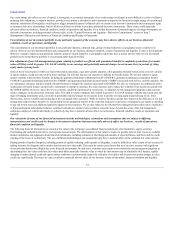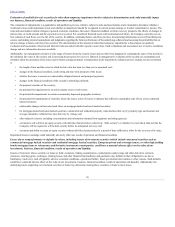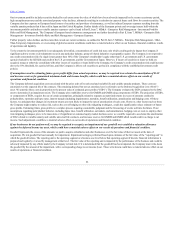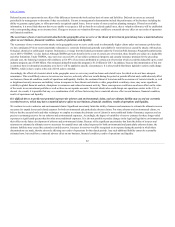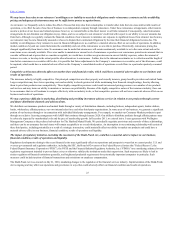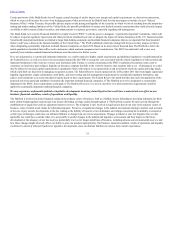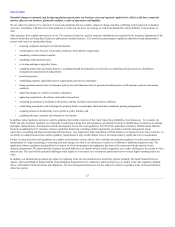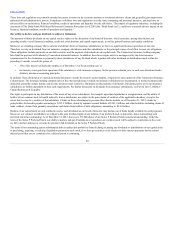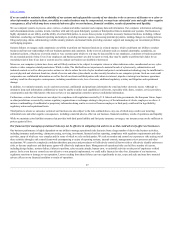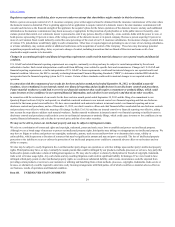The Hartford 2012 Annual Report Download - page 20
Download and view the complete annual report
Please find page 20 of the 2012 The Hartford annual report below. You can navigate through the pages in the report by either clicking on the pages listed below, or by using the keyword search tool below to find specific information within the annual report.
Table of Contents
Evaluation of available-for-sale securities for other-than-temporary impairment involves subjective determinations and could materially impact
our business, financial condition, results of operations and liquidity.
The evaluation of impairments is a quantitative and qualitative process, which is subject to risks and uncertainties and is intended to determine whether a
credit and/or non-credit impairment exists and whether an impairment should be recognized in current period earnings or in other comprehensive income. The
risks and uncertainties include changes in general economic conditions, the issuer's financial condition or future recovery prospects, the effects of changes in
interest rates or credit spreads and the expected recovery period. For securitized financial assets with contractual cash flows, the Company currently uses its
best estimate of cash flows over the life of the security. In addition, estimating future cash flows involves incorporating information received from third-party
sources and making internal assumptions and judgments regarding the future performance of the underlying collateral and assessing the probability that an
adverse change in future cash flows has occurred. The determination of the amount of other-than-temporary impairments is based upon our quarterly
evaluation and assessment of known and inherent risks associated with the respective asset class. Such evaluations and assessments are revised as conditions
change and new information becomes available.
Additionally, our management considers a wide range of factors about the security issuer and uses their best judgment in evaluating the cause of the decline in
the estimated fair value of the security and in assessing the prospects for recovery. Inherent in management's evaluation of the security are assumptions and
estimates about the operations of the issuer and its future earnings potential. Considerations in the impairment evaluation process include, but are not limited
to:
•the length of time and the extent to which the fair value has been less than cost or amortized cost;
•changes in the financial condition, credit rating and near-term prospects of the issuer;
•whether the issuer is current on contractually obligated interest and principal payments;
•changes in the financial condition of the security's underlying collateral;
•the payment structure of the security;
•the potential for impairments in an entire industry sector or sub-sector;
•the potential for impairments in certain economically depressed geographic locations;
•the potential for impairments of securities where the issuer, series of issuers or industry has suffered a catastrophic type of loss or has exhausted
natural resources;
•unfavorable changes in forecasted cash flows on mortgage-backed and asset-backed securities;
•for mortgage-backed and asset-backed securities, commercial and residential property value declines that vary by property type and location and
average cumulative collateral loss rates that vary by vintage year;
•other subjective factors, including concentrations and information obtained from regulators and rating agencies;
•our intent to sell a debt or an equity security with debt-like characteristics (collectively, “debt security”) or whether it is more likely than not that the
Company will be required to sell the debt security before its anticipated recovery; and
•our intent and ability to retain an equity security without debt-like characteristics for a period of time sufficient to allow for the recovery of its value.
Impairment losses in earnings could materially adversely affect our results of operation and financial condition.
Losses due to nonperformance or defaults by others, including issuers of investment securities (which include structured securities such as
commercial mortgage backed securities and residential mortgage backed securities, European private and sovereign issuers, or other high yielding
bonds) mortgage loans or reinsurance and derivative instrument counterparties, could have a material adverse effect on the value of our
investments, business, financial condition, results of operations and liquidity.
Issuers or borrowers whose securities or loans we hold, customers, trading counterparties, counterparties under swaps and other derivative contracts,
reinsurers, clearing agents, exchanges, clearing houses and other financial intermediaries and guarantors may default on their obligations to us due to
bankruptcy, insolvency, lack of liquidity, adverse economic conditions, operational failure, fraud, government intervention or other reasons. Such defaults
could have a material adverse effect on the value of our investments, business, financial condition, results of operations and liquidity. Additionally, the
underlying assets supporting our structured securities or loans may deteriorate causing these securities or loans to incur losses.
20


